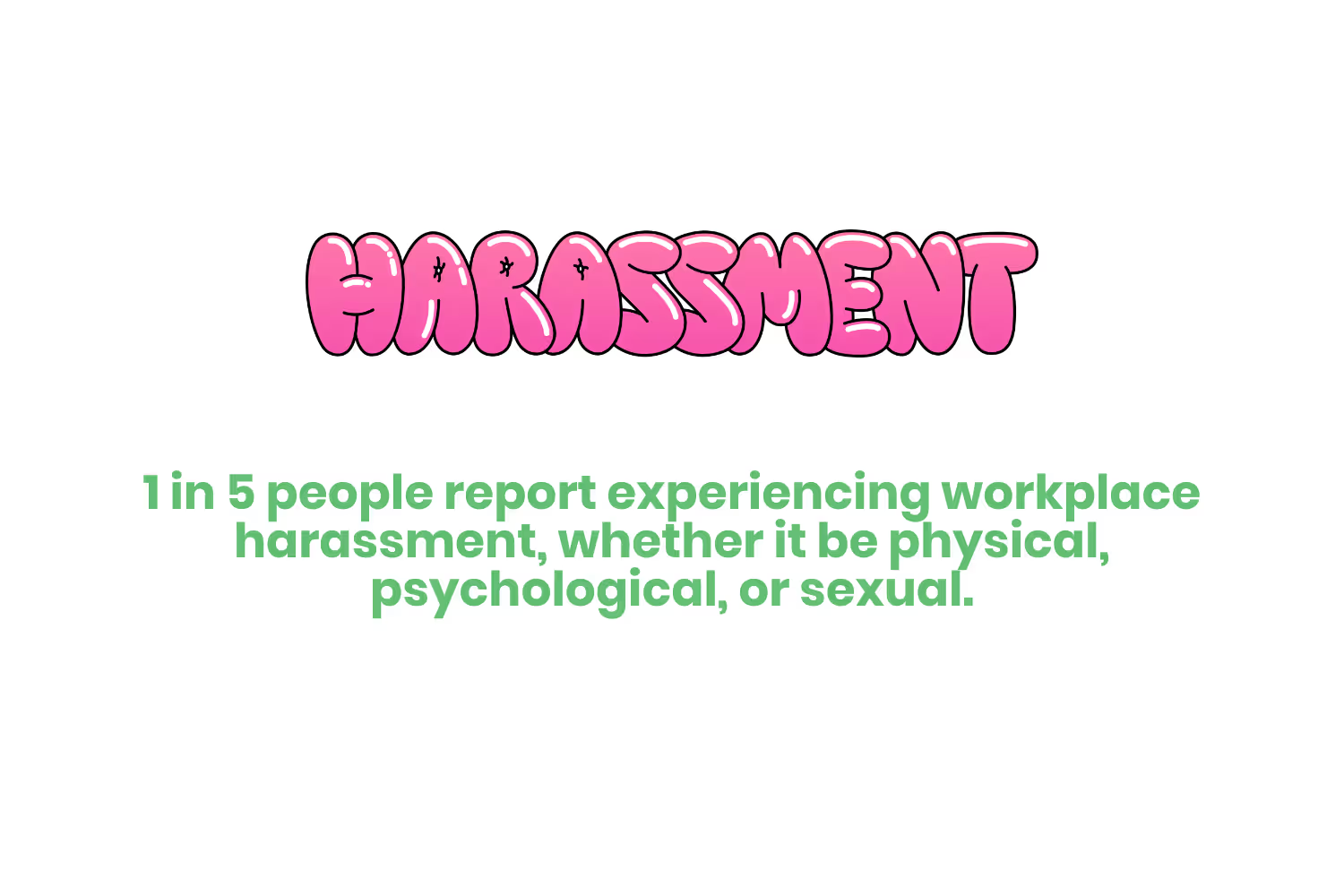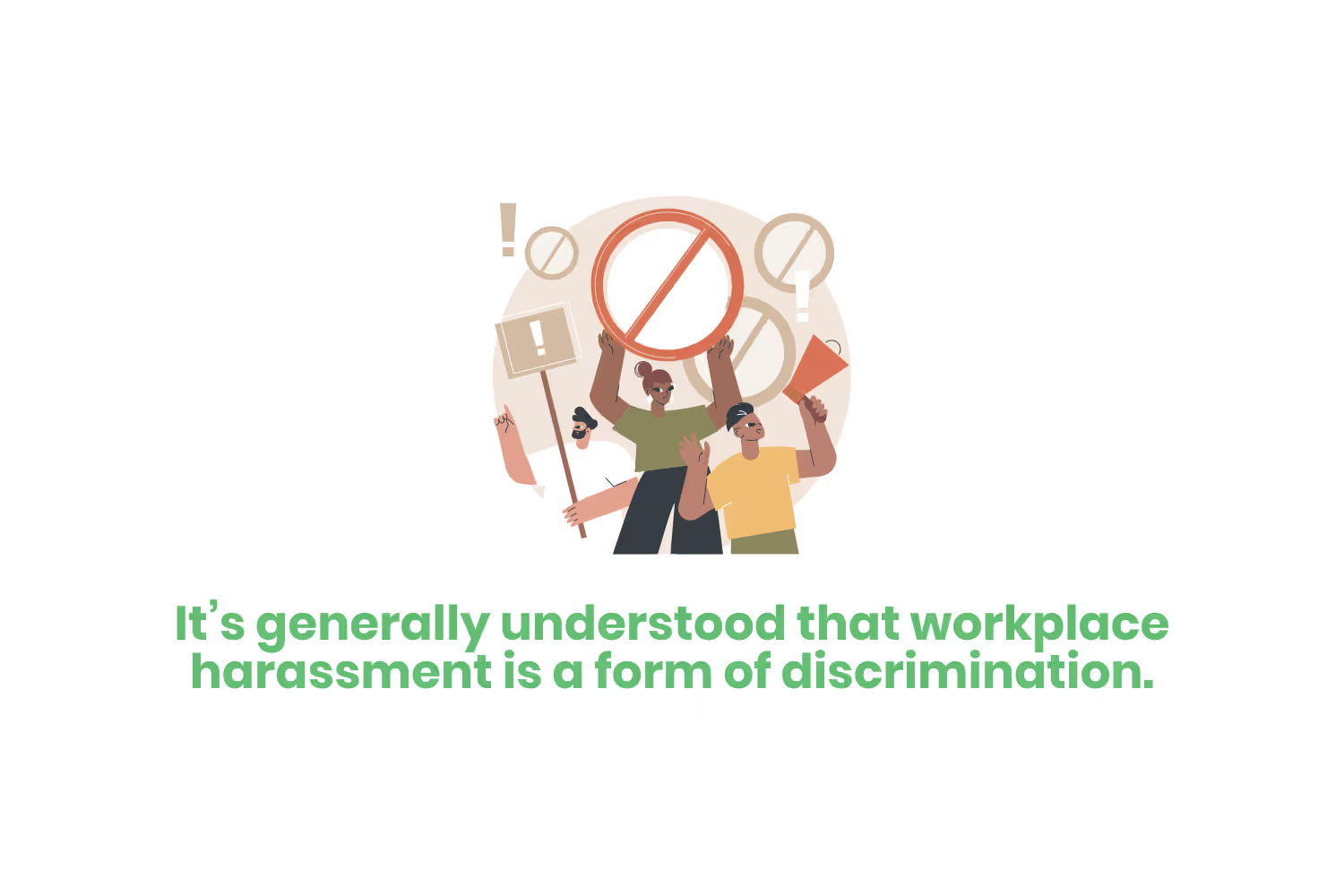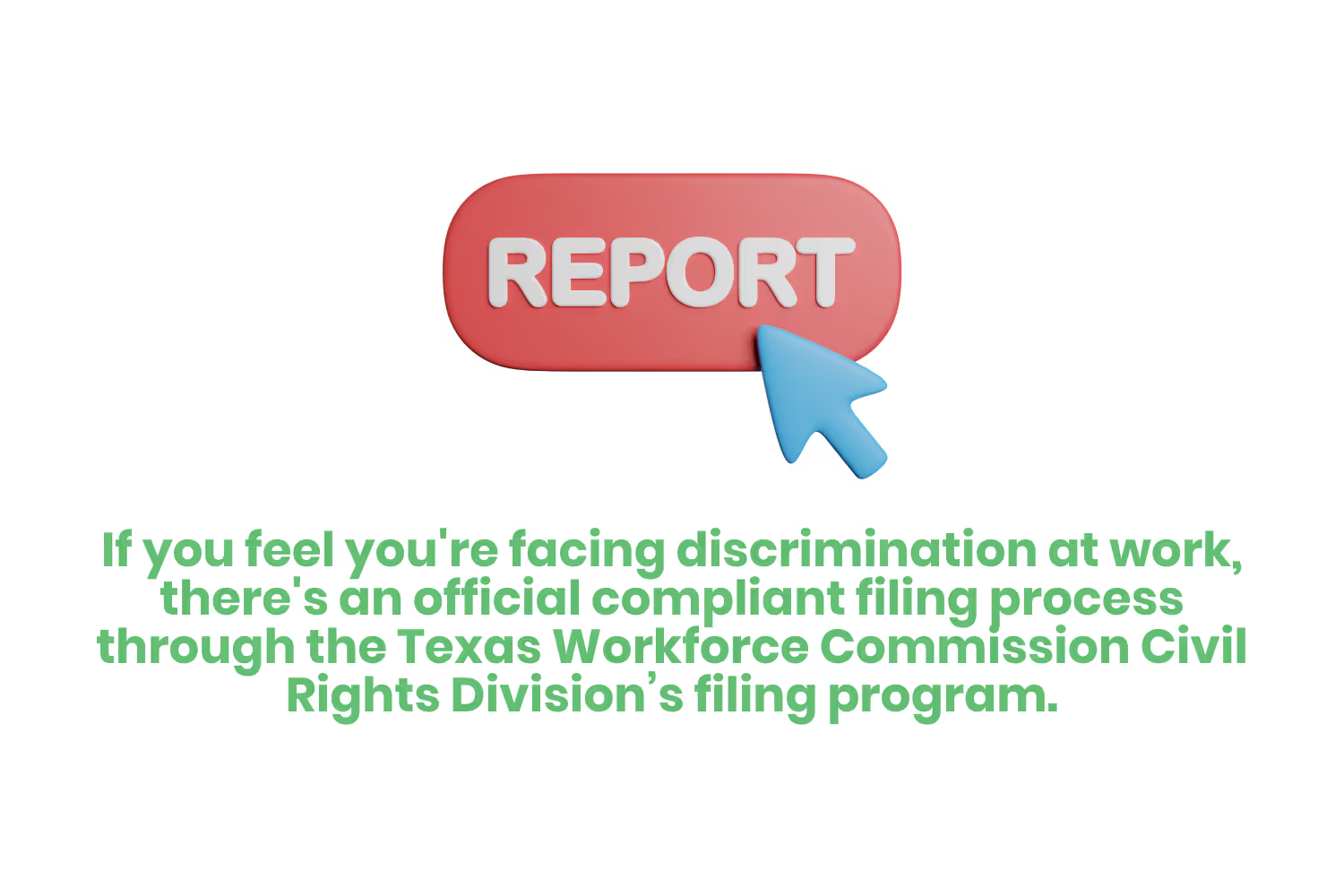Hostile Work Environments in Texas: Everything You Need to Know
When it comes to handling a workplace harassment claim, make sure you understand not only the federal laws that apply but the state laws as well. In this blog, we will look at the state of Texas and how The Lone Star State handles this worldwide issue.

1 in 5 people report experiencing workplace harassment, whether it be physical, psychological, or sexual. Anyone can experience discrimination at work and no professional setting is immune.
From bullying to discrimination, it is important to be able to recognize workplace harassment so that it does not go unchecked. To ignore these issues means you’re actively…

- Cultivating a toxic work environment
- Increasing your employee turnover
- Opening yourself up to a potential lawsuit
Depending on the state you reside in, procedures and statutes may differ slightly. When it comes to handling a workplace harassment claim, make sure you understand not only the federal laws that apply but the state laws as well. In this blog, we will look at the state of Texas and how The Lone Star State handles this worldwide issue.
What is Workplace Harassment?
Workplace harassment takes many forms, so defining the issue is often a challenge. Especially when different states have their own laws and statutes concerning the problem. However, it’s generally understood that workplace harassment is a form of discrimination.
Unwelcome behavior stemming from this discrimination causes stress for the individuals involved as well as an overall toxic work environment for everyone. Harassment often targets a victim’s:
- Sex.
- Race.
- Color.
- National Origin.
- Age.
- Religion.
- Disability.
Any verbal or physical abuse which aims to threaten, intimidate, or coerce an employee can be harassment.
Some examples of harassment are…
- Offensive jokes
- Racial slurs
- Unwanted touching
- Threatening comments
When discussing workplace harassment, the behavior violates the law in certain situations. The first is that a person must endure the harassment or risk losing their job. Second, the behavior is so severe that it interferes with someone’s ability to complete their job. The law recognizes that workplace harassment is an issue when a reasonable person would find the environment to be hostile.

There are many instances where harassment can occur. It can happen between a supervisor and their subordinate, coworkers, or even between a customer and an employee. Note that harassment can also befall a person filing a complaint who is not the direct victim of discrimination, especially through retaliation.
Retaliation is the harassment an employee faces from their employer after reporting an instance of workplace harassment. This can lead to a variety of adverse actions against the employee’s career such as firing, demoting, and pay decreases.
To establish that someone is part of a hostile work environment, they need only to prove the harassment to be severe or pervasive. Not both. Even an isolated incident can be enough to report, if severe enough.
On the other hand, comments about someone’s religion for months on end can create a hostile work environment too. Although one comment might not be sufficient as workplace harassment evidence on its own, the repeated offense can hold weight in court.
As I said earlier, each state has its own laws when it comes to workplace harassment. Let’s take a look at how Texas handles this issue and how to properly report it.
Texas Labor Code Chapter 21 and Other Prohibiting Laws
Both state and federal laws play an important role when it comes to employment discrimination. Federal laws overseen by the Equal Employment Opportunity Commission (EEOC) include the following:
- Title VII of the Civil Rights Act of 1964 (Title VII): This act states that your employer cannot take adverse action against you due to your: race; color; religion; sex (including pregnancy, childbirth, sexual orientation, and gender identity); or national origin. Specifics concerning the prohibition of sexual harassment are also located here.
- 42 U.S.C. § 1981 (Section 1981): States that all persons within the United States jurisdiction have the same right in every state to make and enforce contracts, no matter their ethnicity. As well as to sue, be parties and give evidence. To the full and equal benefit of all laws and proceedings for the security of persons and property. All citizens are also subject to punishment, taxes, penalties, licenses and exactions.
- The Americans with Disabilities Act (ADA): states that an employer may not discriminate against an employee because of their disability. The employer must also provide reasonable accommodations so that employees with disabilities can perform their duties.
- The Age Discrimination in Employment Act (ADEA): It is becoming increasingly common for adults to work past the traditional retirement age, with 32% of American adults working past the age of 65. This act ensures that if you are 40 years or older and your employer has 15 or more employees, you cannot be a target because of your age alone.
- The Pregnancy Discrimination Act (PDA): This act prohibits employers and companies, with more than 15 employees, from discriminating against employees due to pregnancy.
- The Equal Pay Act (EPA): Men and women who hold similar jobs must receive the same pay. Which mandates that men and women who have substantially similar jobs must receive the same pay.
- The Genetic Information Nondiscrimination Act: This act prohibits an employer’s use of someone’s genetic information when taking into account workplace decisions.

When it comes to the state level, the Texas Commission on Human Rights Act (TCHRA) prohibits workplace harassment. The Texas Labor Code Chapter 21 works with Title VII to further protect workers in the state from discrimination.
This protection applies to those who are a part of a company with at least 15 employees. There is also an anti-retaliation provision for participating in filing a complaint.
These laws prohibit the termination of employees due to discrimination, but they also protect from other adverse actions such as discrimination in:
- Hiring decisions.
- Compensation decisions.
- Promotions
- Transfers
- In any other manner that affects the terms, conditions, or privileges of employment.
Local-level laws can further prohibit employment discrimination. For example, local ordinances in San Antonio and Austin prohibit discrimination based on sexual orientation and gender identity.
Reporting Procedures in Texas
If you feel you're facing discrimination at work, there's an official compliant filing process. Work through the Texas Workforce Commission Civil Rights Division’s filing program. This division investigates by gathering information to determine the validity of the claim.
This division works in coordination with the federal Equal Employment Opportunity Commission (EEOC) to resolve workplace harassment issues. Let’s look at the steps to take when you file a workplace harassment report in Texas.
Complaint Process
To file a complaint with the Civil Rights Division, you must follow these jurisdictional requirements:
- The physical address of your place of work must be within the state of Texas.
- The company must have at least 15 employees.
- The date of discrimination must have taken place within 180 days from the date you are submitting the complaint. The 180-day deadline extends to 300 days if a state or local agency carries out a law that prohibits employment discrimination on the same basis.
- The discrimination allegation must include and go over one or more of the following types:
- Race.
- Color.
- National Origin.
- Religion.
- Sex.
- Age.
- Disability.
- The complaint must identify employment harm. This can look like a demotion, denial of promotion, or termination.
Once you submit your report to the Civil Rights Division, it is automatically with EEOC. So you don’t have to submit both separately!

Investigation Process
When the Civil Rights Division receives your Employment Discrimination Complaint Form, they will determine whether it meets said requirements. If the claim doesn’t meet the requirements contained in Texas Labor Code Chapter 21 and/or Texas Administrative Code, Chapter 819, you will receive a formal letter of dismissal.
If the complaint does meet the set requirements, the office will send you a form known as the charge of discrimination. The form requires your signature upon review. Once the Civil Rights Division receives the signed form, they will process the complaint.
Mediation (Optional)
This step is optional, but after the processing of a signed form, you and the respondent are open to participating in mediation. The Civil Rights Division regulates this mediation which allows all parties a chance to resolve the dispute in a manner favorable to everyone. If all parties accept the invitation, a mediator will set up a meeting either over the phone or in person.
Investigation
If either party declines the invitation for mediation, the investigation begins. An investigator will conduct interviews with all parties involved as well as any witnesses. The investigator is also tasked to review relevant documents, policies and procedures, and refer to relevant State laws. Based on the evidence accumulated, the investigator will then determine if there is sufficient proof of discrimination.
Additional Complaint Submission Methods
In addition to the Employment Discrimination Complaint Form, you can also submit a complaint via email, postal mail, or in person. However, keep in mind that the Civil Rights Division is unable to accept employment discrimination reports over the phone.
Required Information
When making a complaint, no matter the method of submission, the person doing so must provide the following information:
- Full name, home address and telephone number.
- Official company name and the physical address where you worked.
- Office telephone number.
- Human Resources Supervisor’s full name, address and phone number.
- If the company has 15 or more employees.
- Whether the treatment was because of your race, color, national origin, religion, sex, age or disability.
- Description of the employment harm. This might be a demotion, denied hire, termination, etc.
Keep this in mind: Failure to cooperate with the investigation by not providing this information can result in the dismissal of your complaint.
Conclusion
As an employer, you are responsible for stopping any instances of workplace harassment. Halting employment discrimination in a timely manner fosters a healthy company culture and will save you from legal violations. If you aren’t sure where to start, consider the following:
- Draft a company policy. Having acceptable and unacceptable behaviors written out will help your employees better understand where boundaries are set.
- State disciplinary actions that will follow any unacceptable behavior.
- Make sure paths of communication are open between upper management and the rest of the team. Employees should know and feel comfortable that they can report any instances of harassment in the workplace.
As an employee, you need to know your rights. Not only in a federal scope but also those that are specific to the state you live in. Hopefully, this blog provides those of you who live in Texas with more information concerning workplace harassment. But, I also hope you never need to utilize it!
Emphasize your product's unique features or benefits to differentiate it from competitors
In nec dictum adipiscing pharetra enim etiam scelerisque dolor purus ipsum egestas cursus vulputate arcu egestas ut eu sed mollis consectetur mattis pharetra curabitur et maecenas in mattis fames consectetur ipsum quis risus mauris aliquam ornare nisl purus at ipsum nulla accumsan consectetur vestibulum suspendisse aliquam condimentum scelerisque lacinia pellentesque vestibulum condimentum turpis ligula pharetra dictum sapien facilisis sapien at sagittis et cursus congue.
- Pharetra curabitur et maecenas in mattis fames consectetur ipsum quis risus.
- Justo urna nisi auctor consequat consectetur dolor lectus blandit.
- Eget egestas volutpat lacinia vestibulum vitae mattis hendrerit.
- Ornare elit odio tellus orci bibendum dictum id sem congue enim amet diam.
Incorporate statistics or specific numbers to highlight the effectiveness or popularity of your offering
Convallis pellentesque ullamcorper sapien sed tristique fermentum proin amet quam tincidunt feugiat vitae neque quisque odio ut pellentesque ac mauris eget lectus. Pretium arcu turpis lacus sapien sit at eu sapien duis magna nunc nibh nam non ut nibh ultrices ultrices elementum egestas enim nisl sed cursus pellentesque sit dignissim enim euismod sit et convallis sed pelis viverra quam at nisl sit pharetra enim nisl nec vestibulum posuere in volutpat sed blandit neque risus.

Use time-sensitive language to encourage immediate action, such as "Limited Time Offer
Feugiat vitae neque quisque odio ut pellentesque ac mauris eget lectus. Pretium arcu turpis lacus sapien sit at eu sapien duis magna nunc nibh nam non ut nibh ultrices ultrices elementum egestas enim nisl sed cursus pellentesque sit dignissim enim euismod sit et convallis sed pelis viverra quam at nisl sit pharetra enim nisl nec vestibulum posuere in volutpat sed blandit neque risus.
- Pharetra curabitur et maecenas in mattis fames consectetur ipsum quis risus.
- Justo urna nisi auctor consequat consectetur dolor lectus blandit.
- Eget egestas volutpat lacinia vestibulum vitae mattis hendrerit.
- Ornare elit odio tellus orci bibendum dictum id sem congue enim amet diam.
Address customer pain points directly by showing how your product solves their problems
Feugiat vitae neque quisque odio ut pellentesque ac mauris eget lectus. Pretium arcu turpis lacus sapien sit at eu sapien duis magna nunc nibh nam non ut nibh ultrices ultrices elementum egestas enim nisl sed cursus pellentesque sit dignissim enim euismod sit et convallis sed pelis viverra quam at nisl sit pharetra enim nisl nec vestibulum posuere in volutpat sed blandit neque risus.
Vel etiam vel amet aenean eget in habitasse nunc duis tellus sem turpis risus aliquam ac volutpat tellus eu faucibus ullamcorper.
Tailor titles to your ideal customer segment using phrases like "Designed for Busy Professionals
Sed pretium id nibh id sit felis vitae volutpat volutpat adipiscing at sodales neque lectus mi phasellus commodo at elit suspendisse ornare faucibus lectus purus viverra in nec aliquet commodo et sed sed nisi tempor mi pellentesque arcu viverra pretium duis enim vulputate dignissim etiam ultrices vitae neque urna proin nibh diam turpis augue lacus.




